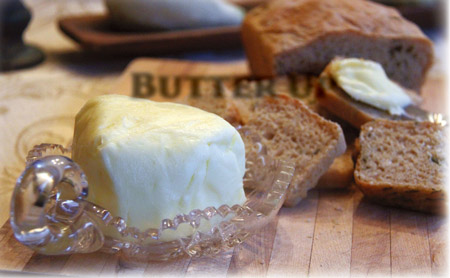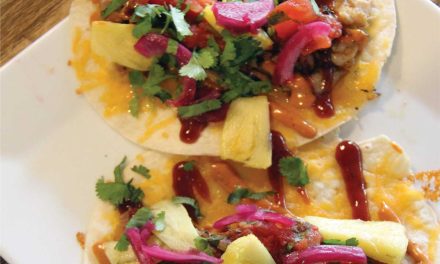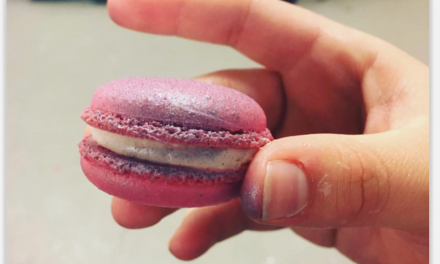
By Lisa Whalen.
Have you given any thought to the butter you choose? Perhaps you’ve always bought the same brand, or maybe organic or local is what’s important to you. We are spoiled for choices even in mainstream supermarkets—let’s face it, most of us don’t make our own. What about the taste? Butter is butter, right? Well, not necessarily. Butter is made from cream which is basically the fat separated from the milk. The butterfat content of milk varies quite dramatically with the breed. Holsteins, the iconic (and high-production) black and white cows that make up 90% of the U.S. dairy herd, yield milk with an average butterfat content of only 3.4% as compared to Jersey cow milk that averages 5.13% butterfat. No matter the breed, the flavor and nutritional values of the butter depend on what those cows eat. Now that I’ve said it, it seems embarrassingly obvious doesn’t it, but I never gave it much thought either. Just as grass-fed beef has a distinct flavor and nutritional profile, so does naturally golden yellow cream from grass-fed cows.
If the marketing of your favorite big brand of butter doesn’t claim that the cows are fed grass, then don’t assume they are, even if ‘happy’ cows in bucolic pastures are pictured. In the commercial dairy industry, cow feed is necessarily a rigorously managed system of specific inputs to gain maximum output, with wide variation from farm to farm in the proportion of grass included, as well as in how much time the herd spends on pasture. Two readily available commercial brands that are made with cream from grass-fed cows are Kerrygold Pure Irish Butter (sometimes displayed in the cheese section) and Organic Valley Pasture Butter (made in the summer grazing season in Wisconsin.)
If closer-to-home is more important to you, try Kate’s Homemade Butter “made the old-fashioned way, churned slowly in small batches … with fresh cream from New England dairy farms that pledge not to use artificial growth hormones.” Cabot Creamery Butter is another option. Cabot “is a cooperative of 1,200 dairy farm families located throughout New York and New England.” You can find both Kate’s and Cabot brands in most grocery stores. For butter that is truly local from start to finish, Hornstra Farm sells their own from their farm store in Norwell or via home delivery.
Making Your Own
Of course, you can always try making your own butter. It will taste at least as good if not better than most store-bought brands, though typically not as economical or long-keeping. It’s so easy even young children can do it and everyone will have one of those “oh that’s how it’s made” moments. So give it a go, at least once. In addition to a tasty treat, you’ll end up with a greater appreciation of your butter options the next time it’s on your grocery list.
Butter has been enhancing our cuisine since ancient peoples first kept dairy beasts, and we’ve been in love with its creamy richness ever since. Whether it’s store-bought or homemade, everything just tastes better with butter. So, smear it over crusty bread, create a spectacular Hollandaise, or melt butter over some freshly popped corn. Mmm … delicious!
By: Plymouth resident Lisa Whalen is a technical writer, home cook, and an admitted lover of dairy cows.







